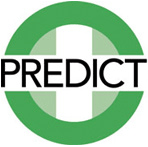Study of Neck Injury Imaging in Children (SONIC): Improving the Diagnosis of Spinal Cord, Bone and Ligament Injuries
Many children sustain head and neck trauma during their lifetime. Significant neck injuries – to spinal cord, neck bones and connecting ligaments – can be identified by performing neck imaging with x-rays, or, if needed, computed tomography or magnetic resonance imaging. Yet, it is unclear which children should receive neck imaging in the emergency department (ED), especially in the context of increasing concerns about radiation-induced cancer in children and the discomfort and delays of immobilisation prior to imaging.
This study aims to:
- investigate the accuracy of existing neck injury clinical decision rules (CDRs) to detect neck injuries in children (external validation) of adult focussed CDRs and the newly developed paediatric PECARN CDR;
- derive and validate a new CDR for neck imaging in children (the SONIC CDR);
- assess the cost implications of different CDRs in children;
- investigate the epidemiology of cervical spine injuries in ANZ.
Study design:
Multicentre, prospective observational study.
Timeframe:
2020 – 2025
Sample:
PREDICT ~30,000 (depending on prevalence of injuries), children aged <16 yrs with sustained or suspected blunt trauma with at least one of the following: Initiation of spinal precautions pre ED arrival, neck pain and/or considered at risk of CSI by any assessing clinician.
News:
Recruitment has commenced at all sites with over 7000 patients enrolled to date.
We have recruited approximately 100 patients to date with eligible cervical spine injuries (2/3 of the required number). These eligible patients for accuracy analysis are currently being reviewed by the study spinal surgeons.
Sites are doing an amazing job at recruitment and keeping our missed eligible patient rate at a minimum.
We project that study recruitment will need to continue throughout 2024 and potentially to early 2025 at some sites to ensure we reach the required number of positive injuries.


